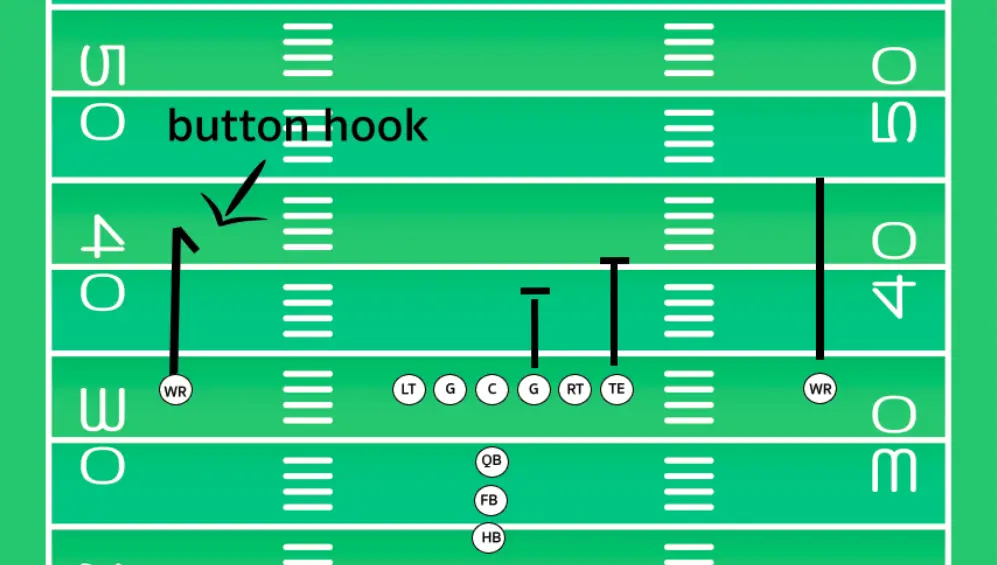A button hook in football is a short route in which a receiver pretends as if he is running a go route only to suddenly turn back towards the quarterback. Button hook routes will be based on a set number of steps so that the quarterback knows precisely when the receiver is going to turn around.
Oftentimes button hook routes are referred to as curl routes or hook routes.
As we stated earlier one of the keys to beating a defender on a button hook is to get them to believe you are running a go/fly route.
When running a go route a receiver is going to use his straight-line speed in order to beat the defender deep down the field.
Wide receivers are often faster than cornerbacks which means these defenders need to respect the wide receivers’ speed when running this route.
If a receiver is running a go route a bit of a cushion is usually needed in order for the cornerback to cover them effectively.
Receivers need to bank on this when running a button hook as the separation between themselves and the cornerback after they make their cut is what makes this route work.
If the receiver can have the cornerback sprinting downfield when he cuts then this route is going to achieve separation the vast majority of the time.
What to know about button hook routes
Now that you have an understanding of what a button hook route is in football you may be wondering how to run one successfully. Below we will cover some of the key factors in an effective button hook route.
Timing with the quarterback
One of the keys to a button hook route is the timing with the QB. Ideally, when running this route the quarterback should throw the ball before the wide receiver is fully turned around.
This way once they complete their hook the ball will already be on its way. This allows the offense to take full advantage of the separation between the receiver and the defensive back.
Additionally, this route is typically run with a specific distance goal in mind. For example, on a third and seven, a receiver will be asked to run a button hook seven or eight yards down the field.
This way when they catch the ball they will already have enough yardage for a first down. For this reason, a button hook route will often change its depth downfield in reaction to the in-game situation.
Don’t look downfield early
Another key factor in button hooks is the issue of receivers looking downfield early. After cutting back towards the quarterback receivers are often given an easy opportunity to catch the ball.
The trouble is these players often want to get a headstart on avoiding the defenders coming their way.
What often happens is the receiver will look downfield a fraction of a second early and look away from the ball. This then causes the receiver to drop the ball as he is not looking when it hits his hands.
This happens countless times every NFL season to the best wide receivers on the planet. To make sure you come down with the catch on a button hook route be sure to catch the ball first then turn and look downfield.
Build up to the button hook throughout the game
Another way to get the most out of button hooks in football is by building up to this route by beating the corner with go routes.
During the course of a game, a receiver will likely get to run a few deep routes against a corner. If a cornerback begins to expect these deep routes the button hook is going to be much more effective.
If you can get the cornerback to start backpedalling hard downfield when your route starts then you are going to have more separation when you cut back to the quarterback on a button hook.

